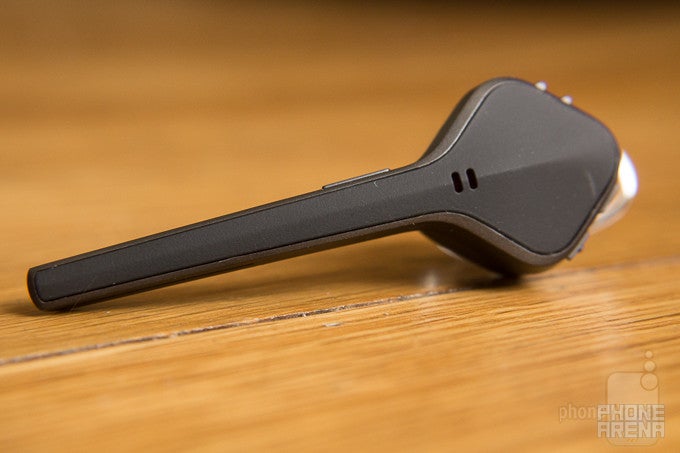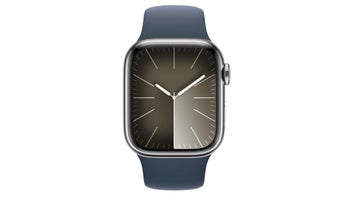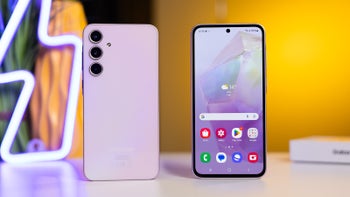Plantronics Voyager Edge UC Review

Introduction
In the world of Bluetooth headsets, Plantronics’ Voyager line is revered and highly esteemed, proving to be the premier Bluetooth headset for the mobile professional. Expanding its prestigious series, we saw the introduction of a sleeker, more visually attractive headset in the Plantronics Voyager Edge – but without the bulkiness that’s typical of the high-end Voyager line. With its successor, the Plantronics Voyager Edge UC, the company intends to make the necessary improvements to elevate its status even higher than ever before!
Packaging contains:
- Plantronics Voyager Edge UC
- microUSB cable
- Spare ear gels
- Ear clip
- Charging cradle case
- Wall charger
- Bluetooth adapter dongle
- Quick start guide
Design
Doing a double take, there’s nothing different whatsoever with the design here – it’s an exact facsimile, down to the placement of its ports and buttons too. That’s not a bad thing per se, since what we have here again is a sleek and beautifully designed headset that can remain inconspicuous on the ear. Donning the same rubbery textured material and moisture-resistant construction, the headset is safeguarded against moisture damage because it employs a P2i technology nano-coating to ensure it bears the liquid repellent qualities to protect it from sweaty workouts, accidental spills, and continued use in the rain.
And just like before, it’s comfortable to wear during long periods of time using any of its appropriately sized soft gel ear buds. For the most part, it sits snuggly in our ear, but for those that want added support, the included plastic ear clip ensures that it’ll stay put – even when it’s used for a quick jog! Combined with its lightweight feel, there’s really never a time in our experience when it becomes bothersome or irritating. Not only does it feel good, but it looks incredibly great as well!
Since the design is unchanged, it simply means that all the buttons and ports are situated in the same locations as before. Looking around its body, we find a power on/off switch, multi-function voice/command button, volume controls, call button, LED notification light, microUSB port, and a proprietary port for its included charging cradle case.
Speaking of that charging cradle case, not only does it act is a useful traveling case to place the headset when it’s not being used, but it’s also a battery charger as well – adding another 10 hours of battery to the headset’s own 6 hours of juice. This is the same exact cradle from before, with the exception of a small compartment that tucks away the Bluetooth USB dongle.
That’s right folks, it’s the Bluetooth USB dongle that makes this version different from its predecessor. At the core of it, the dongle just means that we’re able to connect the headset to a PC or Mac – those that obviously don’t feature Bluetooth radios. When it’s not being used, it can be discretely placed inside of the charging cradle as well.
Plantronics Hub app
There’s a complementary app available for download, which offers some basic features that allow us to check out the headset’s connectivity status, battery life, and some other guides. It’s available for Android, iOS, Mac, and Windows (no Windows Phone support, though).
Frankly, it’s generic and elementary in what is does – with only its battery indicator being the most notable feature. That being said, it really would’ve been nice if it offered some enhanced functions to make the app experience necessary, but it’s not. Sure, it can communicate with the headset’s various sensors to know if it’s worn in the ear or not, but this doesn’t serve any meaningful purpose in our opinion.
Connectivity
Plantronics claims up to 33 feet of connectivity with the Voyager Edge UC. However, in our own real world experience, it’s more like around the 20 feet before the connection is negatively affected by other things.
With the set up process, though, it’s made easier because it features NFC connectivity to establish pairing with any compatible NFC-bearing device. And as we’ve mentioned already, the headset knows when it’s being used and worn, so when it’s in our pocket or something, there’s no worry about it accidentally dialing someone because it locks the call button.
Call Quality
Sadly, there’s no audible improvement to the headset’s performance. To be blunt, it exhibits the same qualities as its predecessor. While it’s passable enough to carry on conversations, it lacks the depth and clarity that makes the Voyager Legend noteworthy in the space. Through the in-ear speaker, its volume output is more in line to being medium loud – as opposed to deafening and deep. As a result, voices tend to exhibit hissy and growly tones, making it a little tough to decipher in noisy environments. Conversely, our callers on the other end of the line are exposed to distorted voices that have a bass-y output.
Battery
The rechargeable battery of the headset is rated for 6 hours of use, which is decent, but that tally can be extended by using the charging cradle case. Adding another potential 10 hours of juice, it brings the entire package to 16 hours of talk time – a generous figure for the hardened road warrior.
Conclusion
They don’t make it easy to recommend this headset over last year’s unit, especially when this one sees an extra $70 charge in the process – giving it a final total of $200 for ownership. That’s pretty steep considering that the only notable new thing present here is the Bluetooth USB dongle, which broadens its compatibility by just a little bit.It’s a premium that we feel is unjustified. Yes, we still love the sleek and meticulous design, as well as the included charging cradle case, but this would’ve been better suited for sale at $150 or less. Nowadays, you can pick up last year’s unit for significantly cheaper than its initial $130 cost – and then pick up a cheap Bluetooth USB dongle to essentially make it an equal offering.
At the end of the day, its grossly out of proportioned price eats away at its potential of being a reasonably attractive option.













Things that are NOT allowed: